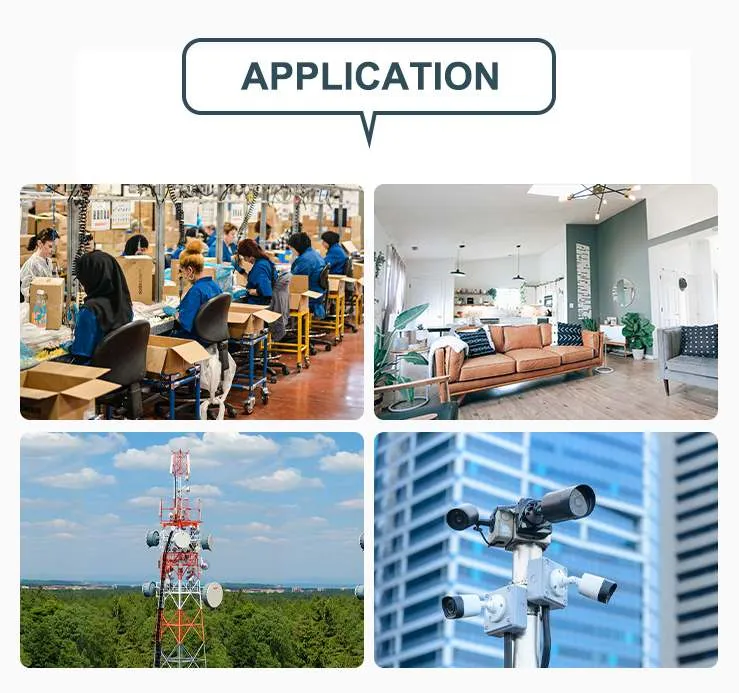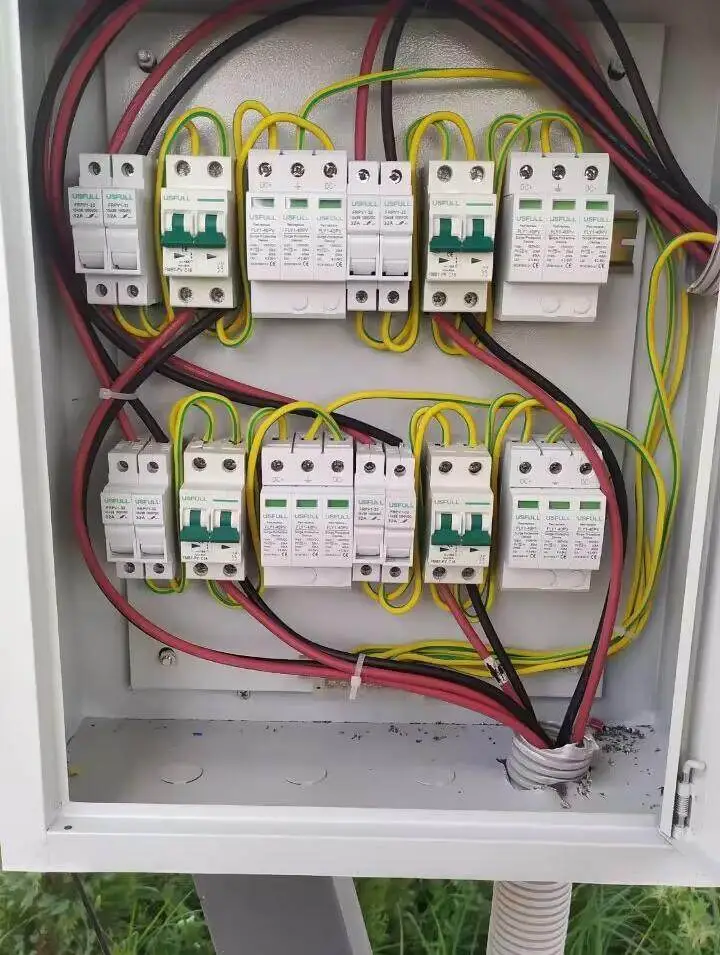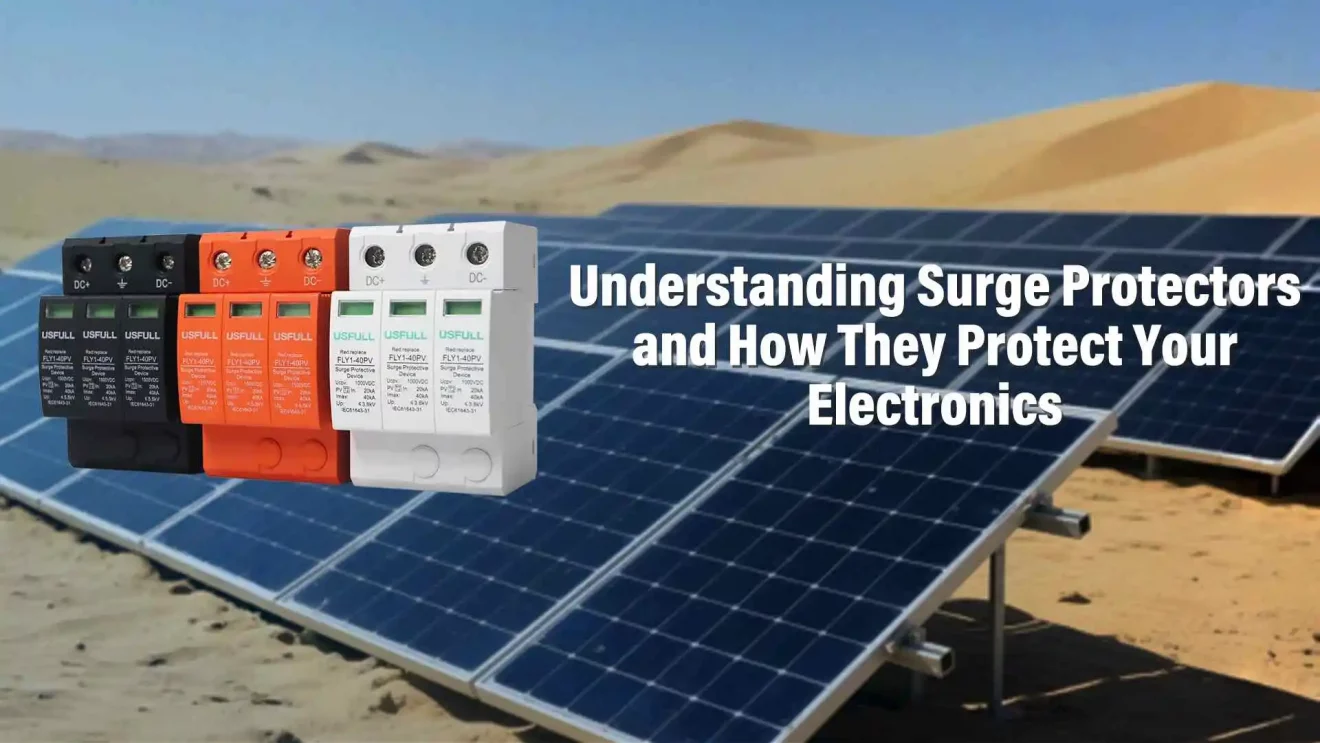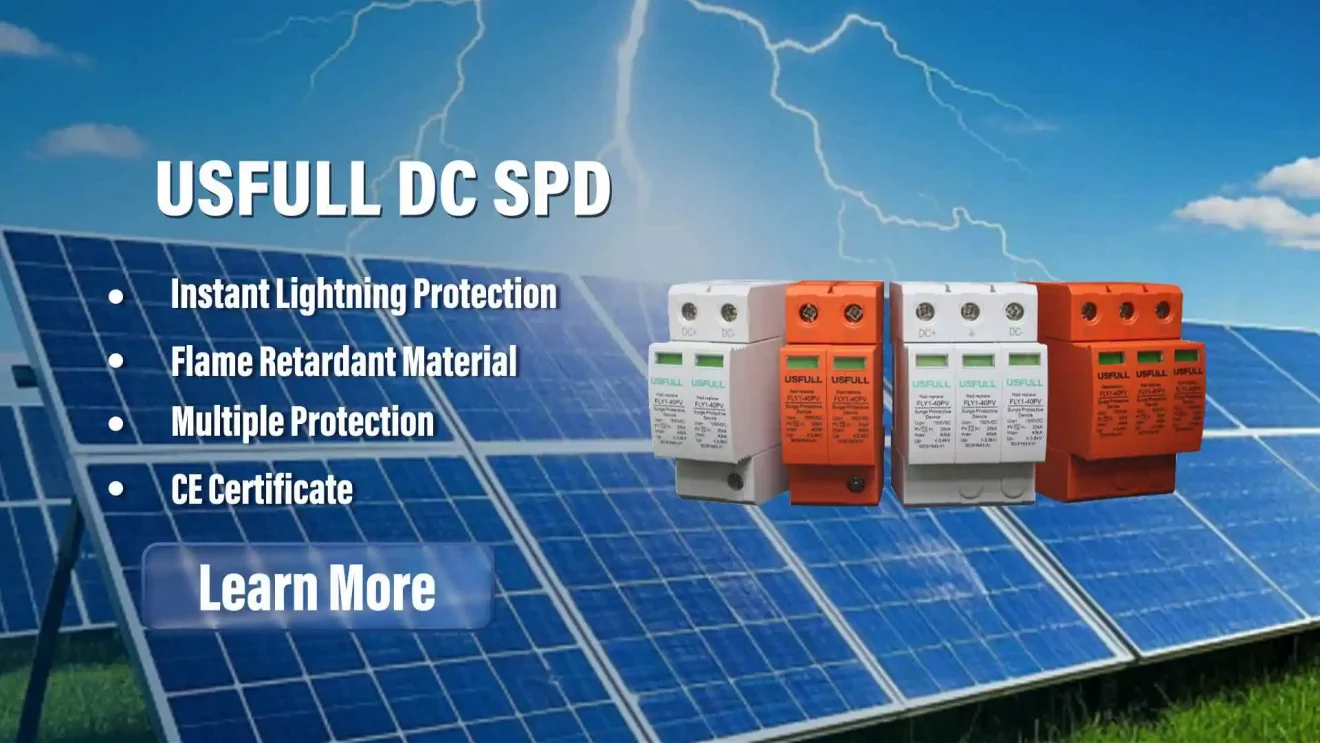Power surges silently destroy electronics—causing data loss, downtime, or even fires. A quality surge protector is the only reliable solution.
A surge protector—also called an SPD or surge protective device—protects electronics by diverting harmful voltage spikes to the ground, preventing damage.
Learn why your devices need protection and how to choose the right surge protector—especially in solar and DC systems.
What is a Surge Protector?
A surge protector, also referred to as a surge protective device (SPD), is a safety component that shields electrical and electronic equipment from brief voltage spikes, also known as surges. These surges may be caused by lightning strikes, grid switching, transformer failures, or the starting and stopping of large industrial equipment.
While the increase in voltage often lasts only microseconds, the impact can be severe—damaging sensitive components inside your inverter, computer, industrial controller, or solar power system. Without protection, your equipment faces a high risk of sudden failure, which often leads to expensive repairs or irreversible data loss.
Surge protectors are especially critical in solar installations, where DC surge threats are common due to longer cable runs and exposure to lightning-prone environments. Devices such as a DC SPD, PV SPD, or solar surge protector are specially designed for photovoltaic systems, offering effective protection against surges on both the DC and AC sides.
How Does a Surge Protector Work?
A surge protector works by detecting overvoltage in the electrical circuit and rerouting the excess energy safely to the ground before it can reach and harm your devices. It doesn’t block the surge but redirects it—a crucial distinction.
Internally, most SPDs use components like Metal Oxide Varistors (MOVs) or Gas Discharge Tubes (GDTs). MOVs are fast-reacting semiconductors that absorb excess voltage. When a surge occurs, they switch from high to low resistance, channeling the unwanted current away. On the other hand, GDTs rely on ionizing gas under high voltage to become conductive and shunt the surge to ground.
In solar systems, DC surge protectors and solar SPDs are tailored to deal with the unidirectional and high-voltage nature of direct current. These PV SPDs are installed between the solar panels and the inverter, as well as between the inverter and grid-tied systems, ensuring multi-point protection.
Surge protectors are not just a safety measure—they are a proactive investment in the longevity and stability of your power system.

Do Surge Protectors Ever Wear Out?
Yes, surge protectors can and do wear out. Even if the device appears physically intact, the internal components—especially MOVs—deteriorate after repeated exposure to power surges. Each surge shortens the lifespan of the SPD, and its protection capabilities diminish over time.
How long a surge protective device lasts depends on three main factors:
Surge Frequency: High-surge environments (like areas prone to lightning or unstable grids) degrade SPDs faster.
Installation Quality: Poor grounding or incorrect wiring can overload the SPD and shorten its effective life.
Product Quality: Cheap surge protectors often lack thermal disconnection mechanisms or fail-safe indicators.
Some high-end DC SPDs include visual indicators or remote signaling contacts to alert you when replacement is needed. For critical systems, especially solar surge protector setups, we recommend periodic inspection and preventive replacement every few years.
How Do I Know Which Surge Protectors are Right for Me?
Choosing the right surge protector depends on your specific application, power type, and environmental conditions. Here are several factors to consider:
Voltage Type (AC or DC): For homes and offices, an AC SPD is sufficient. For solar systems or battery storage units, choose a DC SPD, PV SPD, or solar SPD tailored to direct current protection.
Installation Location: If your site is prone to lightning or high surge exposure, install surge protectors at multiple stages: main panel, subpanels, and near sensitive loads.
Standards Compliance: Look for devices that meet international standards such as IEC 61643-11 or UL 1449. These guarantee the device has passed rigorous surge testing.
Response Time & Clamping Voltage: A fast response time (nanoseconds) and a low clamping voltage offer better protection for delicate electronics.
Replaceable Modules & Indicators: In industrial settings or solar installations, choose SPDs with replaceable cartridges and LED status indicators to ensure easy maintenance.
For solar applications, USFULL offers DC surge protectors rated up to 1500V, tested for extreme environments, and equipped with TUV, CE, and INMETRO certifications. We support customization for various mounting and system configurations.

Go to the Dell Community Forum for More Information
If you’re seeking real-world user feedback and technical discussion about surge protectors, visit the Dell Community Forum. It’s an active space where professionals, technicians, and solar installers share their experience with SPDs, DC SPDs, and equipment failures caused by poor protection.
Topics include:
How to detect when your surge protector has failed
Best SPD brands for commercial setups
Installation photos and diagrams for solar surge protection
Comparisons between MOV-based and GDT-based SPDs
While the forum is centered on Dell equipment, many of the insights apply universally—especially if you’re running sensitive electronics or solar power systems.
Surge protectors are essential, long-term safeguards for every power system—don’t wait for a surge to realize their value.


